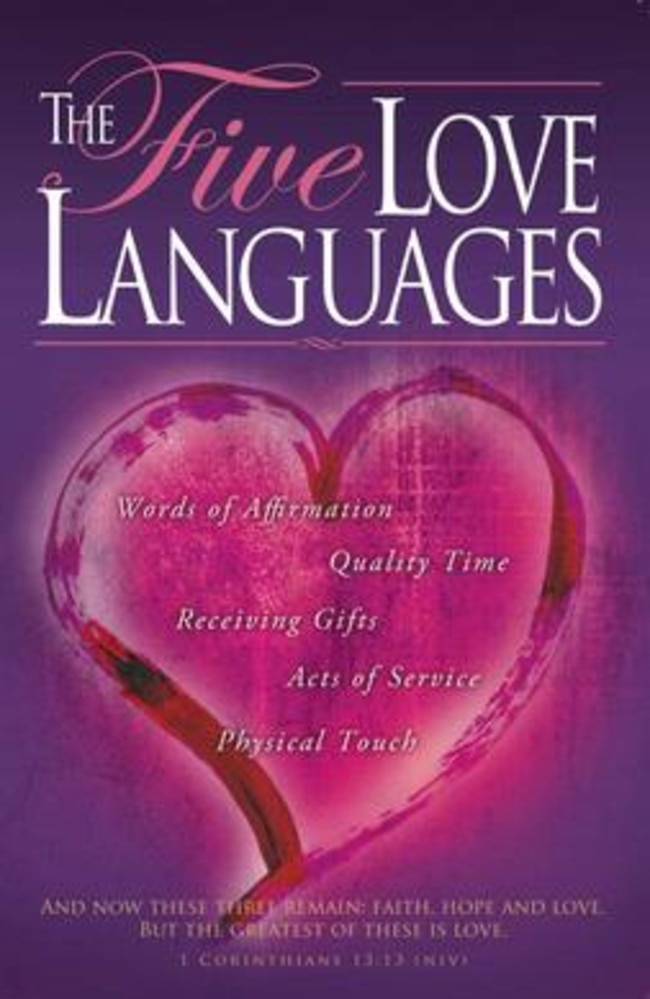Nathan Jolly on the five love languages: Crucial thing you need to know about your partner
THERE are five key ways each of us shows our affection. If you don’t know your partner’s “love language”, you’re in the dark.
I USED to love going to the doctors as a kid. It wasn’t the routine check-ups, broken bones, or the needles that I adored, it was the time spent in the waiting room beforehand. The otherwise sterile room contained the wonder of wonders: a stack of glossy Cosmo magazines. Growing up, my mum bought Woman’s Day, New Idea, That’s Life and Elle, so I was ripe for this next little leap into the secret world of women’s business.
By far my favourite section was the Cosmo quizzes, where a few multiple choice questions could scientifically ascertain everything about your personality, your future, your future partner’s future, and your future partner’s future personality. It was heady stuff for an 11-year-old boy.
RELATED: Nathan Jolly on planning a wedding with spending the GDP of a small country
RELATED: Nathan Jolly on what to do when you friend starts dating someone you hate
As I grew older, I carried this love of pop psychology over into book-length quizzes that all hinged on a basic premise, always numbered, which promised to unlock the secrets to life success, love success, career success, stock market success, success, success, success!
My early favourite was Five Love Languages by Gary Chapman, which came out in 1995. I somehow got my hands on a copy, back when libraries weren’t museums, and was enthralled by the neat categorisation of such a nuanced thing as showing love.
The basic premise is written into the title: there are five ways in which we communicate and receive love, and knowing which one your partner uses and prefers is a sure-fire way to relationship happiness. Conversely, knowing which love language you speak in is also important, so you can better communicate your needs, while adapting your behaviour to better suit the love language of your partner.
Now, the science behind this theory is surprisingly sturdy, although the book itself is so syrupy, just flicking through it at the airport bookshop might give you diabetes. The front cover looks like a box of chocolates that would feature in a TV commercial where a woman suggestively whispers about indulgence and sin, while the language used throughout is lightweight and Oprah-ish.

The book is 200-odd pages, has sold 11 million copies, and spawned a number of cash-in spin offs, such as The Five Love Languages of Children, The Five Love Languages of Singles, The Five Languages Of Appreciation in the Workplace and — proof positive that any successful concept can be stretched wafer-thin — The Five Love Languages: Military Edition. (Imagined quote: “Sarg keeps calling me a no good maggot. How do I truly connect to his heart?”)
In truth, you only need to read the following summary of the five languages to see how they can work for you. The five love languages are:
1. Words of affirmation: Using spoken praise, appreciation, heartfelt thanks or expressing your feelings through phrases such as “I love you, baby”, “I’m so happy we are together” and “you look so beautiful in that tuxedo-tee”.
2. Acts of service: In which actions speak louder than words, such as doing things for your partner; showing them you care through small, thoughtful acts, such as bringing her dress in from the line when you notice it’s going to rain; and large romantic gestures, such as naming a racehorse after her.
3. Receiving gifts: Giving your partner gifts that shows you understand them, care about them and have been thinking about them. This isn’t about buying diamond jewellery to fix a monetary value to your love, it’s more about picking up a decent can opener next time you’re at the IGA because you heard them complain about how their terrible can opener can’t open canned pineapple even though canned pineapple is the devil’s work.
4. Quality time: Making someone the centre of your attention for long periods of time, arranging your schedule around spending time with your partner, organising dates and picnics and one-on-one time. This is what’s important here. Time is a limited resource, and therefore it shows you value someone when you spend it on them. Take her to see the racehorse you named after her!
5. Physical touch: Baaaaby, I’m hot just like an oven, I need some lovin’ … But I also need hand holding and thoughtful back rubs and spontaneous kisses at the market and to feel your leg resting on my leg as we watch Better Homes and Gardens, because I equate physical touch in all non-punchy forms as the ultimate sign of affection. And when I get that feelin’ …
There’s a 30-question quiz on Chapman’s website to help you figure out which love language you speak in, but I daresay you can figure it out just based on the above categories alone. (I did the test and it just said “incapable of human emotion”. Weird!)
“The important thing is to speak the love language of your spouse,” Chapman writes, and it is true. As with all pithy, number-based pop psychology, this should only be used as a leaping-off point, and you may find you favour a number of these love languages. Everything like this operates on a spectrum.
But the five languages of love should get you thinking about which displays of love you most value, and which your partner does. Once you highlight these, it will give you easy, actionable tools to start speaking the same language. Because love is something that happens to us, but it is also something we need to build ourselves. As Massive Attack sing in Teardrop: “Love is a verb. Love is a doing word.”
Nathan Jolly is a Sydney-based writer who specialises in pop culture, music history, true crime and true romance. Follow him on Twitter @nathanjolly



